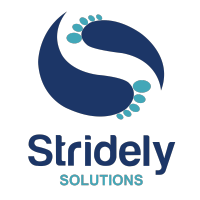Wine gets better with time or age, not applications or software. We can’t emphasize much on the need of owing updated, latest, and feature–rich application to thrive. In the ever-changing world, it is not easy to prevail in all the hurdles with a system that is a decade old.
Can you imagine make through the current remote or work-from-home situation with an IT infrastructure that still runs on Windows 5? It is out of the question. This is where app modernization comes for help.
What it is, how it happens, and why one should give their curial legacy systems require a much-needed makeover are some of the questions that we will try to answer in this post.
Are Legacy Systems Enough To Pull You Through?
The legacy system often referred to as tools & technologies that are based on outdated technologies yet are crucial for conducting day-to-day tasks, are both a boon and bane.
While their existence is needed for seamless processing, their outworn modus operandi can make you lag or linger in today’s competitive world.
The perfect example of facing hassles because a business/enterprise didn’t gave-up its love for the legacy system just happened recently. On Tax Day 201, the Internal Revenue Service wasn’t able to process all the electronic-filed tax returns because their existing IT systems were outdated and crashed in the blink of an eye.
Also Read: Transform your enterprise outlook with Data Modernization
If a high-end body like IRS can’t prevent an IT downfall, what can we expect from a small or budding business? They can lose their grounds because of using legacy systems.
Let’s show you a big picture of issues that can face due to legacy apps:
- Legacy apps are not properly guarded. Even if you try to safeguard them, you will taste failure as their year-old configuration doesn’t support the advanced security configuration. And we all know what could happen to data or other crucial details, saved on an unprotected system.
- Most of the legacy system refuses customization and integration. Hence, you will experience literally zero flexibility.
- It is imperative to invest a huge chunk of money in the support and maintenance of the legacy system. All thanks go to their complex nature. You will be shocked to know that the US Federal government wasted 80% of the total IT budget on Operations and Maintenance in 2019. A huge a portion of that 80% was consumed by aging legacy systems.
- Legacy systems score very less when user experience gets counted. Their proprietary languages and technologies render a shoddy experience to the end-user. The direct impact of this is on the team’s productivity and efficiency.
We think all the above points are adequate to let you realize that what hidden damage that your decade-long legacy system is doing to your organization.
App Modernization – A Viable Solution
While it this clear those old-fashioned technologies are no less than an open pit of hurdles, enterprises are trying hard to spot a way out from this situation. App modernization is the ray of hope in this situation.
It refers to the process of giving a touch of modernism to the existing legacy system by updating its infrastructure, features, and internal architecture.
Some of the most ideal legacy systems for app modernization are monolithic and on-premises applications.
Below mentioned are some of the reasons explaining that app modernization paves the path for beneficial transformation:
- App modernization keeps an enterprise-ready to face the world and remain relevant. Capabilities like recording and conferencing, which were absent earlier, can be acquired easily.
- As app modernization allows an organization to add/implement security features in the legacy systems, there would be enhanced and leveraged data security.
- With app modernization, enhances business agility is a sure thing It will become easier to add existing features and changes as per the changing business needs. This has a direct impact on the efficiency of the businesses.
Now, that it is clear the transformation of legacy systems lies in the heart of app modernization, it’s time to know about some of the best legacy system modernization strategies.
Strategy 1 – Architecture-Driven Modernization (ADM)
This is a coordinated strategy involving understanding and advancing the existing software assets. The best advantage of this strategy that it adheres to a design-based perspective towards legacy system modernization. With the help of this strategy, aging software will become more agile.
Strategy 2 – SABA
SABA is an upper-level app modernization framework used mainly for planning organizational issues that might arise during the evolution and migration of legacy systems. This strategy is famed for tackling multiple issues while offering a means of finding out the future implications of software choices.
Strategy 3 – Reverse Engineering Model
In the strategy, old-fashioned legacy applications are migrated to the new and updated ecosystem slowly and gradually. Legacy data migration is the last step in this strategy. For accessing legacy data in a new environment, the Reverse Gateway process is used. This is the best pick for the transition of hefty and price projects.
Strategy 4 – Visaggio’s Value-based Decision Model (VDM)
If technical and economic aspects of app modernization are taken into account, this is one of the viable software renewal processes that any enterprise can adopt. This is bought into the picture when enterprises feel that their legacy systems are reaping reduced economic returns and quality than the expectations.
Strategy 5 – WMU
WMU stands for Warrants, Maintenance, and Upgrade. This is a customer-centric legacy system transformation process in which maintenance strategies are chosen as per the customers’ satisfaction and need. Because of this reason only, it often becomes too hectic. One has to gather and analyze a whole bunch of information. But, it is quite impactful.
The Bottom Line
Regardless of the shape and size of your business, you must give your legacy systems a quick and much-needed update. This single step will help me become more time-relevant, productive, and competitive. So, if you haven’t thought about it, it’s time. There are many kinds of processes and strategies available for app modernization. Chose as you please.
While you’re thinking of app modernization, always hand over this job in the hands of experts only. Stridely Solutions has the best team to make this happen. You may contact us immediately.


